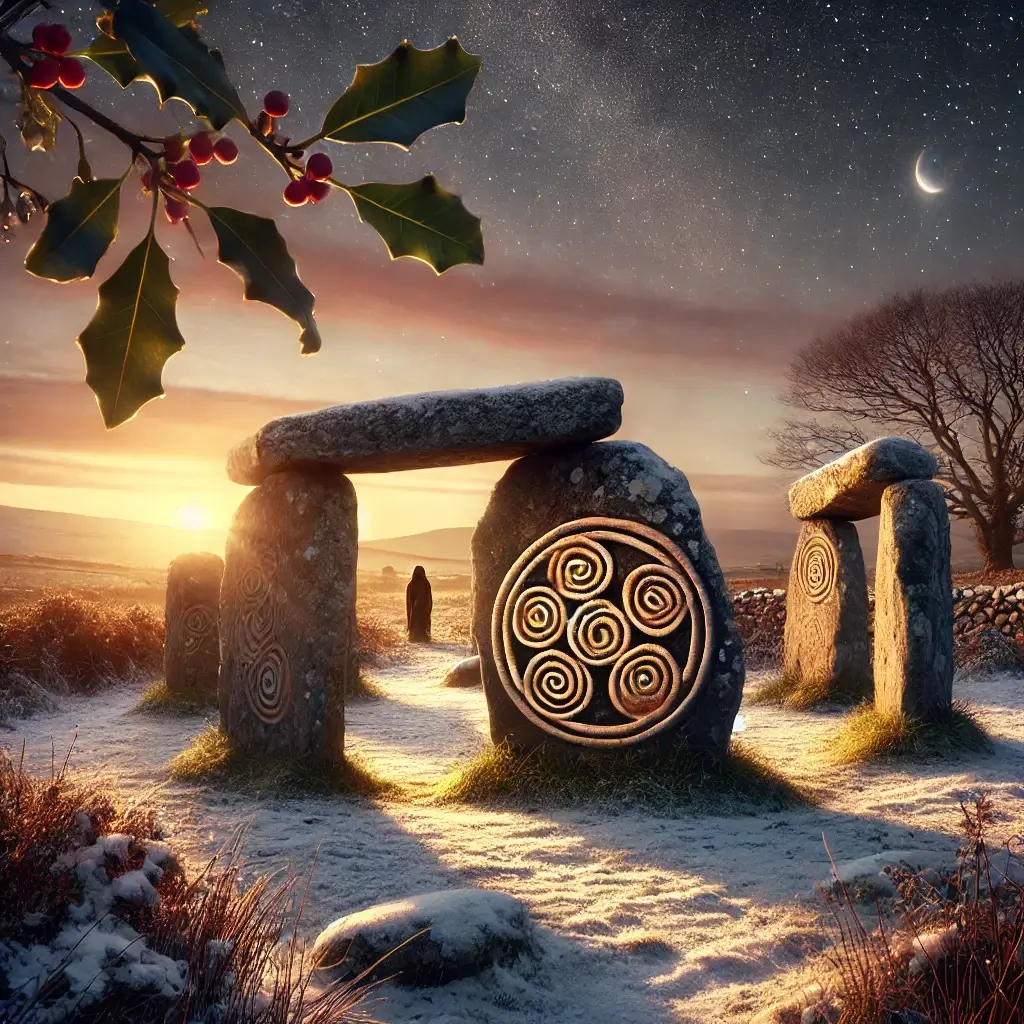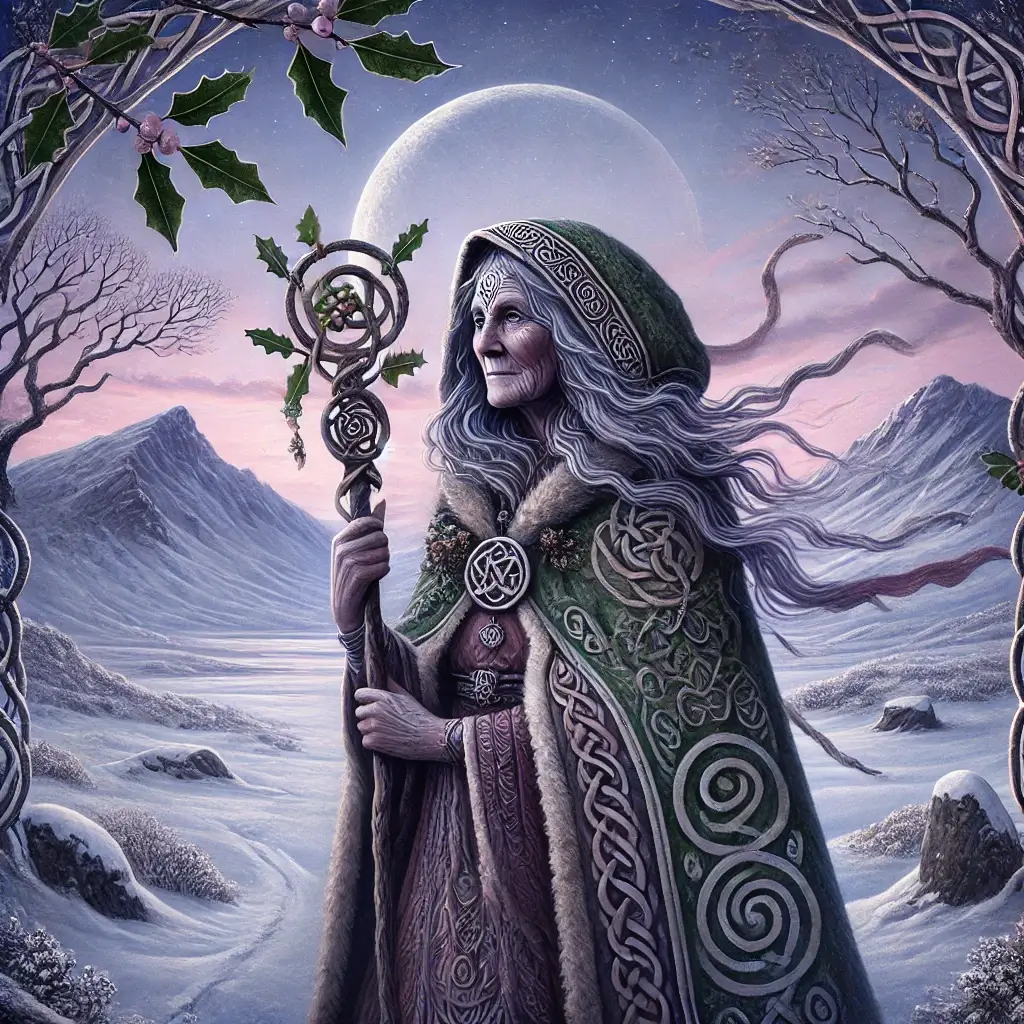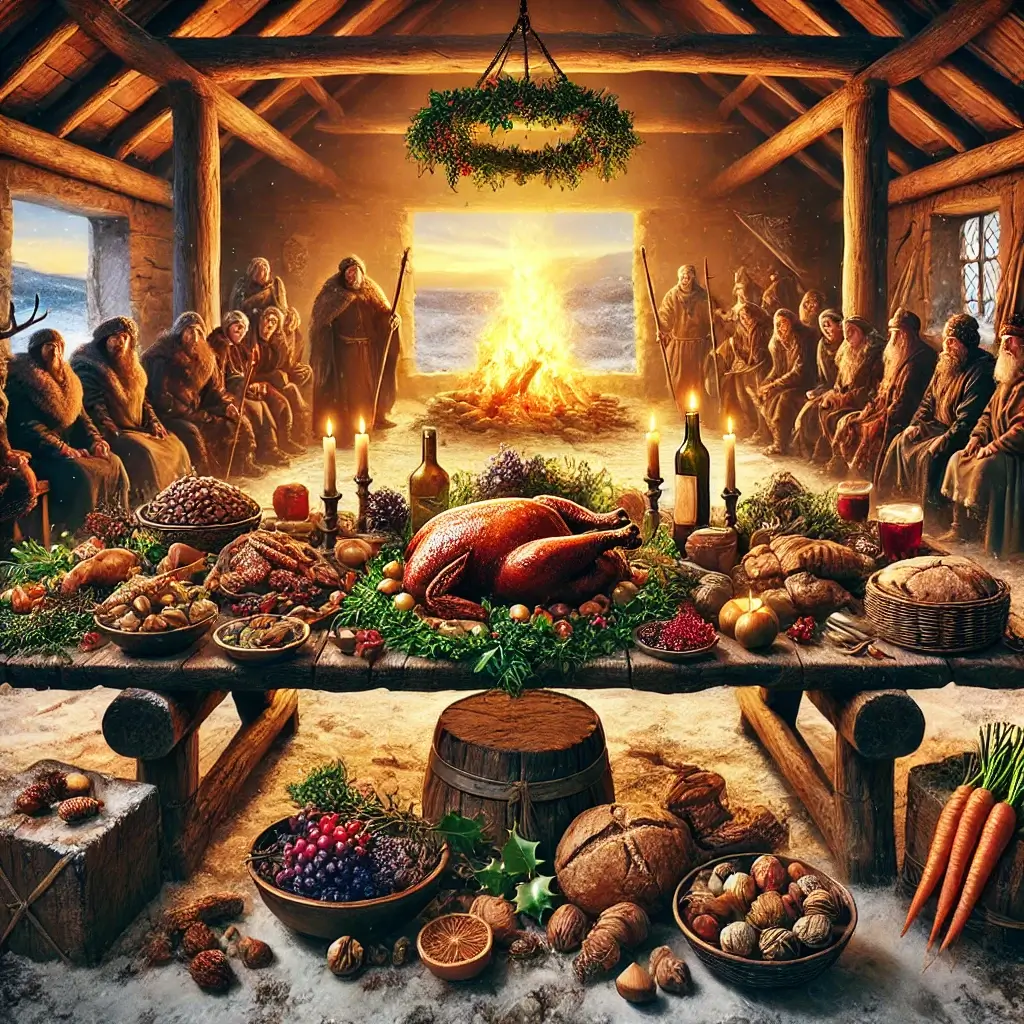No products in the cart.

The Celtic Winter Solstice, which occurs around December 21st, has always held a unique place in the hearts of those who embrace Celtic heritage. In ancient Celtic culture, this day marked the shortest day and the longest night of the year, symbolising the rebirth of the sun. It was a mystical, almost magical time, when the Celts believed that the barrier between worlds was thin, and both natural and supernatural forces were at work.
In Ireland, this time of year was celebrated with special rituals and gatherings. The Winter Solstice was a moment to honour the natural cycle and to celebrate the renewal that would follow the darkest point of winter. Today, the traditions may have changed, but the deep reverence for this turning point remains, with thousands gathering to mark the solstice in Ireland and around the world.

The Celtic people, who lived across the British Isles, Ireland, and parts of mainland Europe, deeply respected nature’s cycles. The Winter Solstice was a central event on their calendar, seen as a time to honour the sun’s return and the promise of spring. Archaeological evidence, such as the alignment of ancient sites, tells us that the Celts were highly aware of the solstice.
For example, Newgrange, a 5,000-year-old passage tomb in County Meath, Ireland, was carefully constructed to align with the solstice sunrise. At dawn on the Winter Solstice, sunlight streams through a roof-box opening and illuminates the inner chamber for about 17 minutes. This phenomenon, discovered by archaeologists, indicates that the Winter Solstice was highly significant to the builders and the Celtic people, representing renewal, rebirth, and the triumph of light over darkness.

In the Celtic tradition, the Winter Solstice is often referred to as “Alban Arthan,” which translates to “The Light of Arthur” or “The Light of Winter.” The term reflects the importance of light’s return during this dark season, symbolising hope and new beginnings. Although the Celts didn’t leave behind many written records, this name for the Winter Solstice has persisted, connecting modern-day observers with the ancient beliefs and language of the Celtic world.

The Celts celebrated the Winter Solstice with a range of vibrant traditions, many of which have continued or evolved over centuries. Bonfires were common, lit as a way to symbolise warmth and the growing power of the sun. Community gatherings and feasts were also popular, providing warmth and joy during the coldest and darkest part of the year.
One of the most well-known solstice traditions involved the Druids, the Celtic priests, who conducted rituals with plants like mistletoe and holly. Mistletoe, in particular, was believed to have special powers, and Druids would cut it from oak trees with a golden sickle. The mistletoe was then blessed and shared among the people for protection and good fortune. This practice demonstrates the Celtic belief in nature’s power and its connection to their spiritual lives.

The Winter Solstice was also reflected in Celtic art, which is famous for its intricate designs and nature-inspired symbols. Stone carvings found at ancient sites like Newgrange often depict spirals, suns, and other natural symbols. These designs are thought to represent the cycles of the sun and the endless nature of life.
Modern artists inspired by Celtic traditions still use solstice themes, such as the sun, spirals, and knots that symbolise interconnectedness and the circular nature of life. In jewellery, tapestries, and festive decorations, these symbols continue to evoke the mystique of the Winter Solstice, connecting people to Celtic heritage and the changing seasons.

Blessings were an essential part of the Celtic Winter Solstice, intended to bring health, prosperity, and protection as the new solar year began. Druids would often bless the community’s Yule log, a large piece of oak meant to burn for several days as a tribute to the sun. As the log burned, it was thought to bless the household and drive away misfortune.
One traditional blessing went as follows: “May the returning sun bless your path, bring warmth to your heart, and light to your days.” Blessings like these focused on renewal and hope, encouraging people to look forward with faith and gratitude as the light began to return.

In Celtic mythology, the Winter Solstice is associated with the goddess Cailleach, also known as the Hag of Winter. She was a powerful figure, responsible for shaping the landscape with snow and frost. Cailleach symbolised the darker side of the year, ruling over winter with an iron hand.
Yet, at the solstice, her power was believed to wane, as the sun’s return meant her hold over the land was weakening. Cailleach was often said to transform into the goddess Brigid as winter turned to spring, a symbolic representation of the natural balance between life and death, warmth and cold. This transformation shows the Celts’ respect for the cycles of life and the changing seasons.
Quotes, proverbs, and sayings are another beautiful way to capture the spirit of the Winter Solstice in Celtic culture. Here are a few timeless quotes that resonate with the themes of rebirth and hope:
These quotes, inspired by Celtic beliefs, remind us of the enduring hope that the solstice brings, a promise that darkness will give way to light.
Symbols played a significant role in Celtic solstice celebrations. The sun wheel is one of the most important symbols, representing the cycles of the year and the return of light. Holly and mistletoe, both sacred to the Druids, were used for blessings and protection. The holly symbolised endurance, as it remains green through winter, while mistletoe, found growing on oak trees, was believed to bring good fortune.
The Yule log, traditionally made of oak, was another key symbol. Burning the Yule log symbolised the sun’s return and provided warmth during the solstice celebration. Each of these symbols encapsulated the Celtic reverence for nature, light, and the cycles of life.

Food was a central part of Celtic Winter Solstice celebrations, with special feasts marking the occasion. Roasted meats, root vegetables like carrots and parsnips, and breads made from stored grains were common foods. Nuts, apples, and berries, preserved from autumn, were also enjoyed.
In addition, ale and mead, made from honey, were popular beverages at these feasts, providing a festive touch to the solstice celebrations. Feasting was not only about nourishment; it was also a way to come together, share warmth, and celebrate the promise of longer days.
The Celtic Winter Solstice is a time steeped in mystery, beauty, and ancient traditions. Each aspect, from blessings and symbols to art and feasting, reflects the Celts’ profound connection to nature and the changing seasons. Even today, celebrating the Winter Solstice is a way to honour the cycle of life and the hopeful return of the sun. As we gather and reflect on this ancient festival, we continue a legacy that has brightened the darkest days for thousands of years.
















